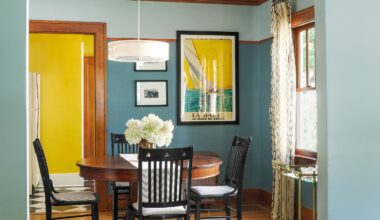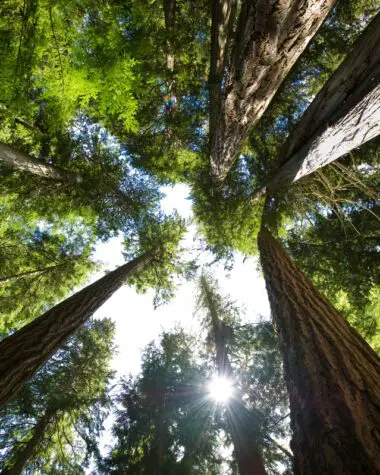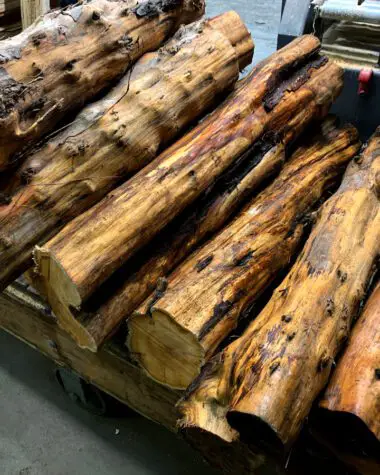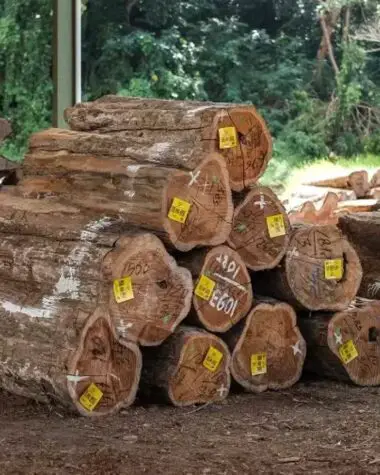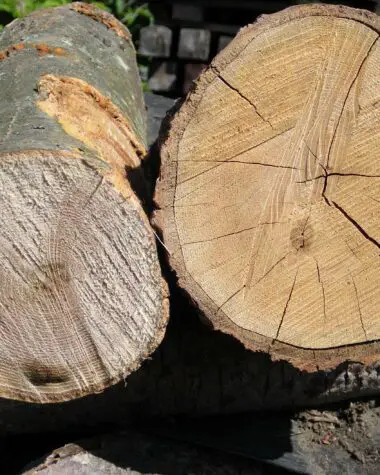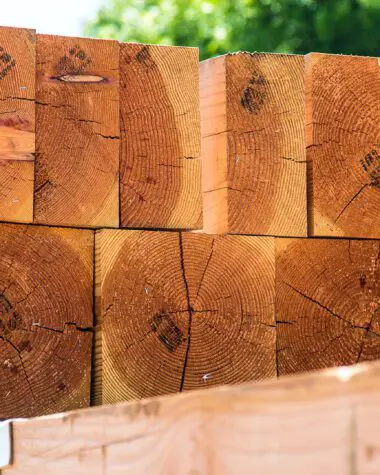No one will neglect the beauty of giant redwoods as they see them like those in California’s Kings Canyon National Park because they are impressive both in height and width. Like other softwoods, the Redwood is a member of the deciduous, coniferous tree that does not lose its leaves in the fall.
This is just a quick snap of information about Redwood, and there are more things that you need to know. This article will give you the properties, uses, and much more about this wood type. Let’s begin.
Properties of Redwood
Redwood is one of the most recognizable trees in the world, and it is known by its name sequoia or California redwood. Furthermore, the wood properties of this softwood are also important to be recognized as they are the ones that make the popularity of Redwood possible.
Color
There is a reddish-brown tone that is beautiful in the heartwood of the Redwood, whereas the sapwood comes with a narrow and creamy appearance. It is an eye-pleasing wood that stirs a unique appearance to houses.
Read: Sapwood vs. Redwood
Workability
With minimal tool dulling, Redwood works well with both hand and machine tools. If the cutters are sharp, they plane nicely but easily splint when working on the end grain. It adheres to nails well, paints well, and finishes nicely. It also stains well. However, alkaline adhesives work best for gluing.
Grain Structure
Although most Redwood has a straight grain structure, some still exhibit wavy or uneven grain patterns. Redwood has some great qualities for wood finishing because of its straight grain.
Durability and Resistance
As one of the highly durable natural materials, Redwood is resistant to bending and splitting. It is substantially lighter than other softwoods and is simple to work with when using standard woodworking equipment for drilling, sawing, and cutting. Natural tannins contribute to its durability and make it ideal for outdoor use.
Also, the natural tannins in Redwood keep pests away and protect the wood from harm. As a result, Redwood woodworks and furniture have good resistance to insect assaults, rot, and deterioration.
Odor
Redwood emanates a subtle fragrance.
Uses of Redwood
Redwood is frequently used for support beams in home construction, especially if the house is built on the American West Coast. It costs more and is less likely to be utilized the further you are from the coastal redwood trees.
Redwood is also used for fencing, decking, framing, and siding. The older redwoods are protected by selective harvesting in the timber industry; the majority of Redwood used for construction comes from younger trees.
The wood’s softness makes it perfect for furniture. It can be bent easily for innovative design and looks great with patio or deck furniture outside. The price of the furniture increases with the age of the wood.
Due to its construction, Redwood is resistant to bending and splitting, and its natural tannins provide weather protection. However, it will discolor from continuous, heavy rain. Thus furniture manufacturers advise using covers during downpours.
Redwood: Pros and Cons
As you learn more about redwoods, you must consider their pros and cons. These points help determine whether to consider this softwood in your next project.
Pros
According to Wood Magazine, the heartwood of redwoods contains a unique natural chemistry that gives the wood its excellent longevity, water resistance, and resistance to insects and fungi that cause rot.
The thick bark’s tannins are fire resistant due to their low resin and tannin content. Redwood is the ideal wood for outdoor applications because of its characteristics. The absence of an aftertaste or odor is another characteristic of the wood. Most water tanks and other liquid-holding vessels are made of Redwood.
Redwood’s natural built-in quality is its main strength. It keeps its stability after being kiln-dried, demonstrating its structural strength. Redwood is available in three grades: structural, garden, and architectural. The appearance of the wood depends on how it was sawed: vertical or flat grain. The redwood ages and becomes gray if unfinished.
Cons
The biggest drawback of using Redwood in your construction project is the cost. According to Captain Patio, Redwood is almost twice as expensive as pine, and old-growth Redwood is twice as expensive, making it virtually prohibitively expensive for larger projects. Because the wood is delicate, building projects that require following the grain are pricey. Additionally, due to its softness, it is prone to dings, scratches, and a clutch of splinters.
Redwood can stain and even react chemically, especially when it’s near anything iron. Additionally, cleaning it is challenging, so pressure washing is out. Wood requires a lot of maintenance, especially when used outdoors. The wood’s reddish-brown hue and appearance can be preserved by varnishing and cleaning it. The fact that wood can induce allergies in some people and animals is an unusual drawback, but it does exist.
More about Redwood
Native to the region, coastal redwoods can be found along the Pacific coasts of California, Oregon, and Washington. They are also known as sequoias, another term for these enormous trees that may grow to about 400 feet in height. According to Buy Redwood, their forebears gave shelter to dinosaurs over 144 million years ago, but their heyday occurred during the California Gold Rush in the late 19th century.
Coastal redwoods were the material for the furniture and shelter new settlers needed. Buildings made of Redwood survived the 1906 San Francisco earthquake and fired while others perished, demonstrating the material’s resilience. Only 5% of the original redwood trees still exist due to human intervention, making the redwoods of today’s coast considered second growth, which means they are 50 to 150 years old.
Other Wood Types You May Be Interested In
Below are other softwood types that you may be interested in.
Wrapping Up
There is more to the end of your discovery about Redwood. The most important thing to do in your learning is to make it come alive. We cannot wait for you to discover on your own how amazing this wood type is if you consider it in your next project. Feel free to revisit the points above; we will help you familiarize yourself more with the beauty of Redwood.


